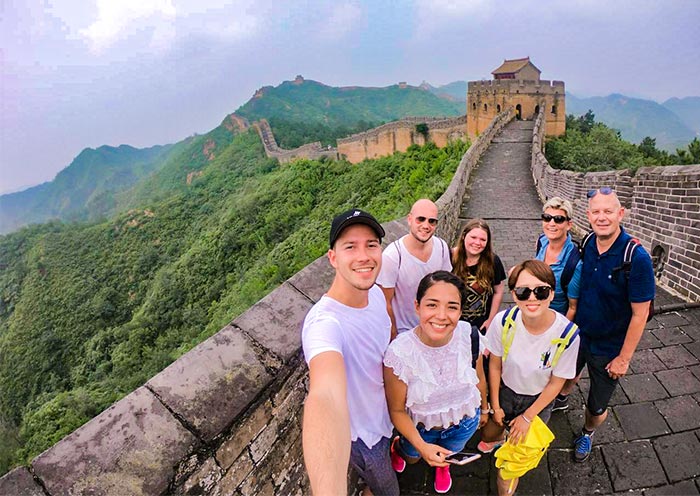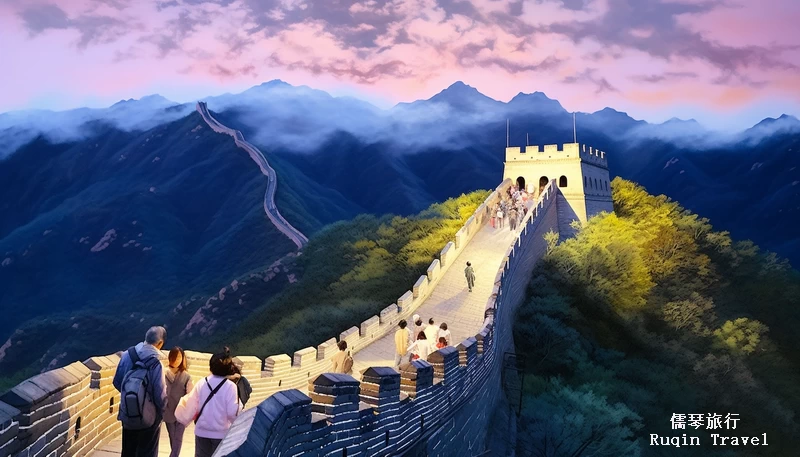20 Excellent Ways To Savor the Flavors of China
Wiki Article
Top 10 Tips For Shopping In Regional China. China
1. Research before you goTip Learn about what each area is famous for. For instance, Suzhou for silk, Jingdezhen for porcelain and Tibet for its Thangka paintings.
Pro Tip: Concentrate your shopping efforts so that you don't unnecessary time.
Con: You must be prepared and knowledgeable of the major attractions of the area.
2. Locally purchase to ensure authenticity
To guarantee authenticity, buy directly from the place of origin to ensure the high-quality of your products.
Pro: Lowers the risk of copyright products and supports local artisans.
Con: Might require travel to less-touristy areas or rural regions.
3. Visit Artisans or Workshops
TIP: Try small workshops or hubs for artisanal work instead of the usual shops.
Pro: Gives you a better understanding of the craft and guarantees that you're purchasing directly from the creators.
Con: Handmade goods can be more expensive and difficult to bargain on.
4. Understanding the significance of culture
Tip: Study the cultural background of items such as jade carvings, cloisonne or scrolls of calligraphy.
Pros: You'll be able to appreciate your purchases more and assign them more meaning.
Pro It takes time to appreciate the cultural nuances.
5. Check the Quality with Care
Check that the items you purchase, like ceramics, tea or embroidered items, are of high quality. standards.
Pro The client gets what they paid for.
Pro: It takes experience or guidance to find top-quality products.
6. Beware of mass-produced items
Pick unique items that are hand-crafted instead of mass-produced copies.
Pro: You'll be able to take home an extremely precious and special souvenir.
Con: It's more expensive and difficult to find genuine workmanship.
7. Compare Prices
Tips: Compare prices from several shops or stalls for the same product.
Pro: Helps you determine reasonable price ranges and avoid being overcharged.
Con: Time-consuming particularly for markets with large sizes.
8. Buy Tea from Trusted Vendors
Tip For areas such as Hangzhou or Fujian there are trusted Tea Houses in Longjing or Tieguanyin.
Pro: Ensures top quality and authenticity.
Con: The price of teas that are high-quality can be prohibitive for those new to the country.
9. Local Customs
Some sellers expect you to negotiate or make it part of the shopping experience.
Pro: Provides a stimulating cultural dimension to shopping.
Con: A misunderstood understanding of customs could lead to awkward interactions.
10. Pack judiciously
Take into consideration how you intend to carry your delicate or bulky regional items like silk and ceramics.
Pro: Reduces the risk of the damage to your items and ensures that they arrive in good condition.
Cons: Additional logistical issues, and possible shipping costs.
Advantages of Shopping for Regional Specialties
Unique souvenirs.
Cultural Immersion. By buying local specialties and products, you can get to know the region's history and craft.
Direct purchases of artisans help local economies.
Cons of Shopping Regional Specialties
Genuineity Risks: The danger of purchasing copyright or lower-quality versions.
Logistical Challenges: Transporting delicate or heavy objects isn't easy.
Genuine regional products are often expensive, particularly handcrafted items.
The following tips can help you shop with confidence for local specialty foods and ensure that your purchases from China will be memorable. Check out the recommended explore this amazing destination for blog recommendations including ancient football in china cuju in ancient china, shenzhen golf club, chinaexpeditiontours.comattractions, popular beijing night markets, eating in taiyuan, chinese wood carving originated in neolithic period, the origin and history of the mysterious chinese dragon, zhangjiajie tour maps, wuzhi mountain wuzhi shan five finger mountain, shopping in tibet and more.

Top 10 Tips On Visiting During The Season When You Visit Famous Temples In China
1. Visit during Off-Season(Autumn/Winter).Tip. Consider visiting Chinese temples that are famous in cooler weather (usually from November through February). It is a time when there are fewer tourists and temperatures are cooler.
Pro: It is quieter and provides peace and tranquility.
Cons: It can be colder and less comfortable to go to temples outdoors.
2. Prepare yourself for extreme weather
Tips: Temperatures in various seasons may be drastically different. Winters can be extremely cold, and summer temperatures can be extremely hot. Pack accordingly.
Pro: Prepare yourself for any weather conditions, and enjoy your journey in peace.
Cons: It is difficult to pack for extreme weather conditions, particularly when you're traveling in a small amount.
3. The seasons of Spring and Summer Visits for Vibrant Flora
Tip: Visiting temples in spring and summer allows you to witness beautiful gardens, blooming flowers, and lush landscapes around the temples.
Beautiful scenery enhances the experience of visiting the temple grounds.
Con: Summer can be very hot and crowded, particularly during national holidays.
4. Take into consideration festivals and special events.
Make sure to plan your visit so that it coincides with festivals that are traditional, such as the Chinese New Year (January/February) as well as the Mid-Autumn Festival. These festivals offer a variety of rituals and celebrations as well as an opportunity to be immersed in the vibrant culture of the temple.
Pro: There are numerous temples offering traditional and thrilling events. This is a great way to experience a new tradition.
Con: Temples are known to be very busy and hotel prices can rise during festival season.
5. Beware of Peak Holiday Seasons
Tips Refrain from visiting temples during peak tourist times, like Chinese New Year and Golden Week (October), as they are likely to be crowded by foreign and local visitors.
Pros: Less crowded More peaceful and relaxing visits. An experience of spirituality.
Con: You'll miss certain special events during peak periods.
6. Make sure to check for Temple Closures during the winter months.
It is important to find out whether the temples you intend to visit are open or closed in the winter months. This is especially true when you live in more remote areas or regions. It is always best to verify in advance.
Benefits: It eliminates trips that aren't needed and lets you plan other activities ahead of time.
Con: Certain temples could have reduced hours or completely closed for renovations, leading to disappointment.
7. Early Morning Visits to the Beach During the Summer
TIP: If you plan to visit during summer, be sure to start early in the morning to avoid the scorching midday heat. Temples are usually open from dawn, and this time is more peaceful and quiet with fewer tourists.
A quieter and cooler experience without the crowds.
Con: Might not be suitable for all.
8. Prepare for the possibility of rain during the Summer.
It is possible to experience heavy rain during summer, especially in the southern part of China. If you're planning to visit during this time bring an umbrella or rain gear so you can stay dry.
Pro: The temple remains stunning even when it's raining.
Con: The rain can interfere with outdoor activities and cause the temple grounds slippery.
9. Visit Temples in the Mountainous Areas in Autumn
The fall foliage provides a stunning view and is the perfect time to visit mountains (e.g. Mount Wutai).
Pros: The cooler temperatures makes hiking and outdoor exploration more pleasant, and the mountain views are stunning.
Con: Popular temples in the mountains can still draw crowds during weekends and on holidays.
10. Take a look at the Lunar Calendar for Specific Events
Tip: Many temples in China adhere to the lunar calendar and certain rituals or occasions are linked to particular lunar dates. It is important to check the calendar in order to be able to attend important celebrations, like the Lantern Festival, Buddha’s Birthday and other temple events.
Pros: Experience distinctive cultural practices and gain deeper understanding of local spiritual traditions.
Con: It may take extra time to plan and research according to the lunar calendar and some events might not be aligned with the dates of your travel.
The Benefits of Going to Chinese Temples during the season
Fewer Crowds: Off-season visits offer a more peaceful and contemplative experience.
Cultural Events: The celebrations give a greater insight into the local religion and culture practices.
Scenic Beauty: The season of spring or autumn is the best time to go for breathtaking landscapes, lush gardens and temples.
Tempel exploration is more pleasant in the winter and autumn months.
Pros and Cons of Seasonal Chinese Temples Visits
Unpredictable weather : winter can be cold, while summer may be too warm which could impact your comfort.
Temple Closures: Some temples may have restricted hours or be closed during off-seasons or extreme weather months.
In the time of festivals during the year, temples can become overcrowded. It is therefore difficult to enjoy the peaceful environment of a temple.
Limited Activities Some events during the season and ceremonies are not permitted to take place if you arrive outside of the timeframe.
You can make your visit to China's temples more enjoyable and meaningful by choosing the best season and making plans ahead. Understanding the changing seasons, will allow you to maximize your experience. Check out the most popular plan your journey to this landmark for more recommendations including entertainment in hong kong, shanghais winter wonderland festivals lights and fun, zhangjiajie tour maps, shopping in fuzhou, taishan tour maps, a wonderful landscape painting lijiang river, tips for identifying copyright, chinese festival cuisine, shopping in fuzhou, ancient dapeng fortress and more.
